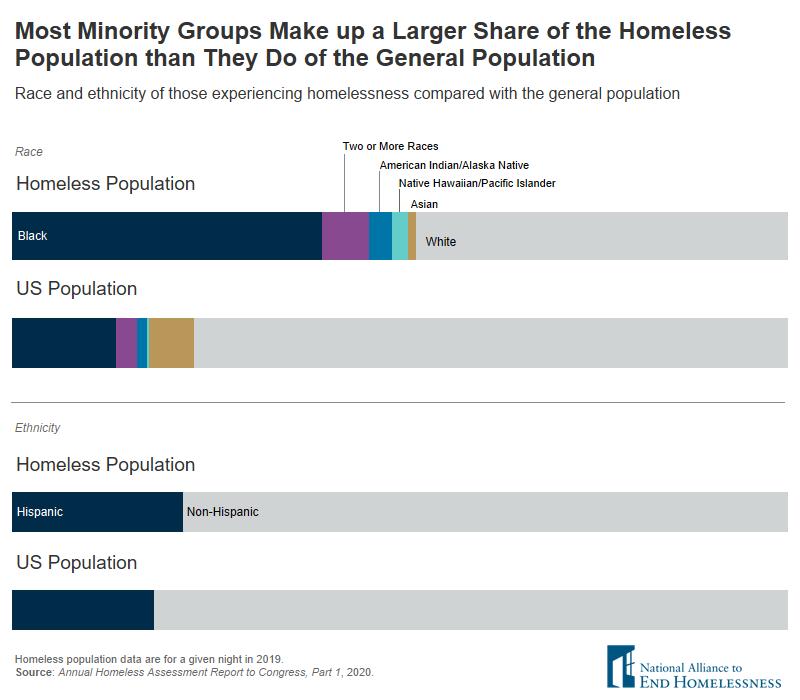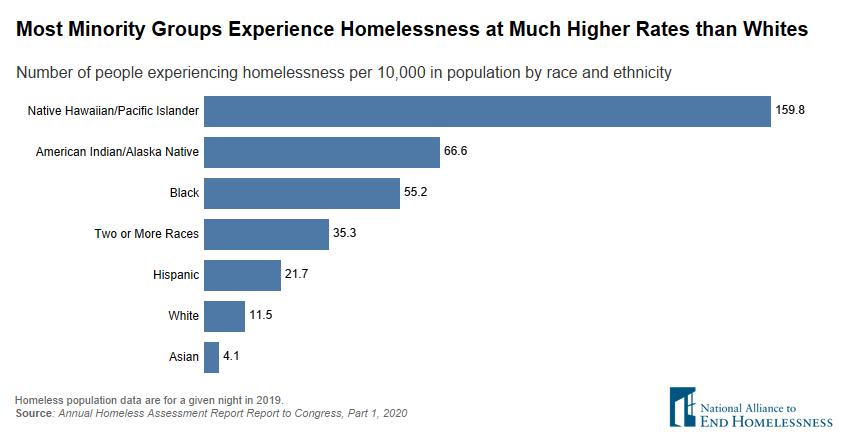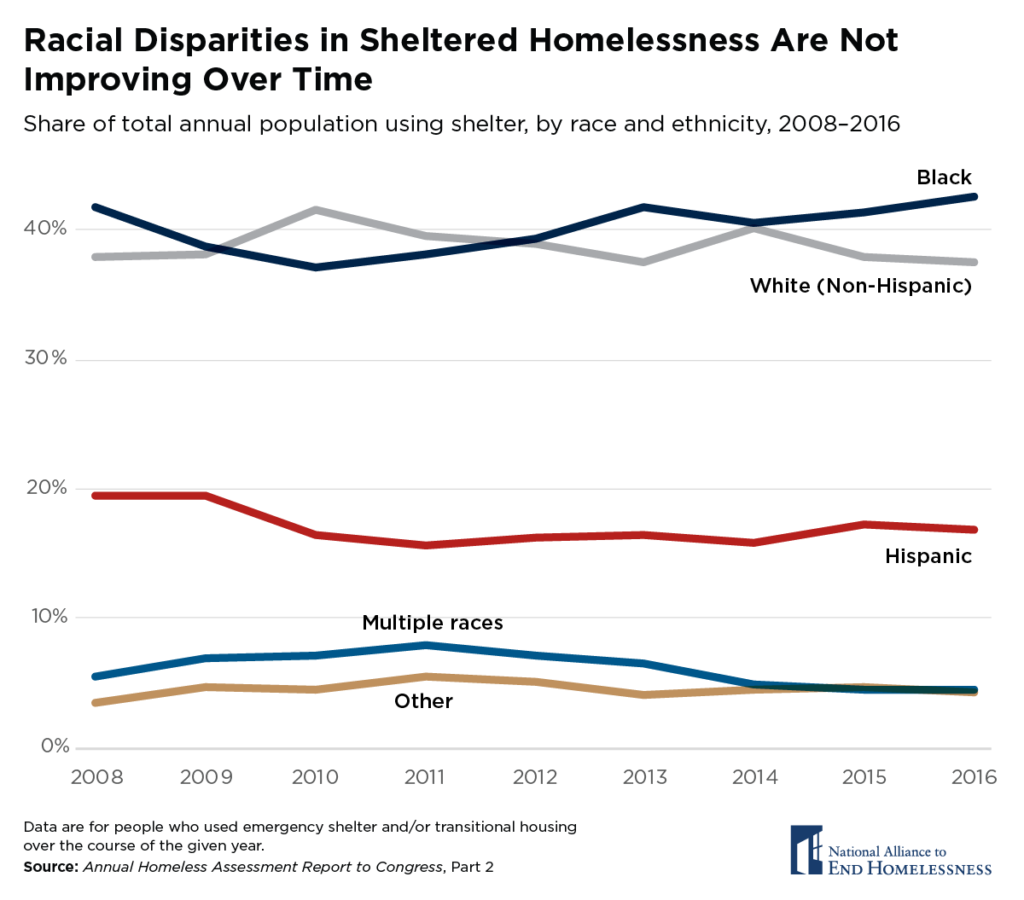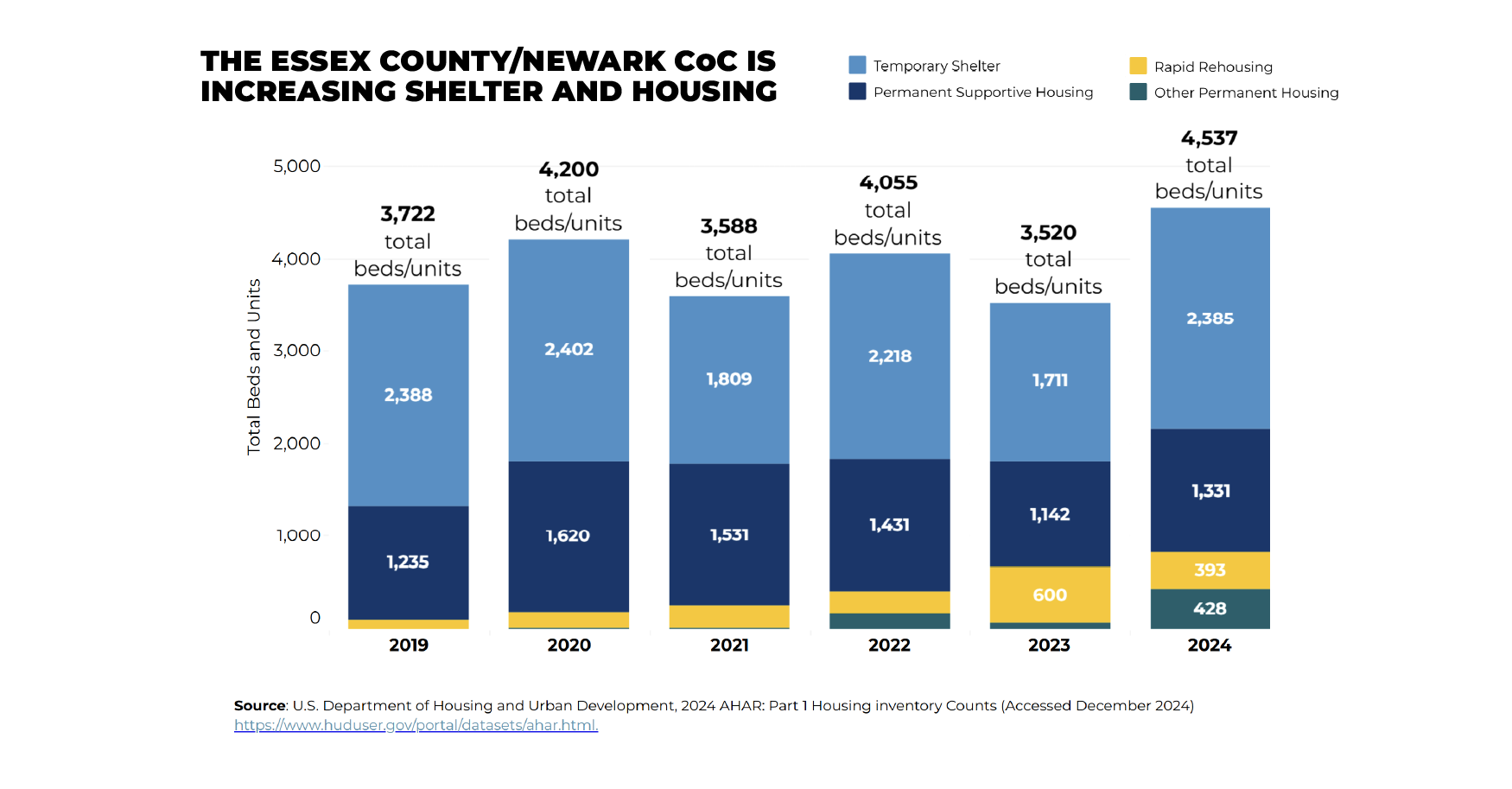Most minority groups in the United States experience homelessness at higher rates than Whites, and therefore make up a disproportionate share of the homeless population. African Americans make up 13 percent of the general population, but more than 40 percent of the homeless population. Similarly, American Indians/Alaska Natives, Native Hawaiians and Pacific Islanders, and people who identify as two or more races make up a disproportionate share of the homeless population. Hispanics make up a share of the homeless population approximately equal to their share of the general population, while Whites and Asians are significantly underrepresented.
The rate at which most minority groups experience homelessness is far greater than that of Whites and Asians. Measured as the number of people experiencing homelessness on a given night per 10,000 people in the population, Native Hawaiians and Pacific Islanders have the highest rate of homelessness. American Indians/Alaska Natives have the second highest rate, followed by African Americans, people who identify as two or more races, and Hispanics.
Racial and ethnic disparities in homelessness are not improving significantly over time. African Americans currently make up the largest share of all people who access shelter over the course of a given year, and their share has increased in recent years, while the share for Whites has declined.
Stay Updated: Solutions, Stories, and Ways to Make an Impact
Sign up to receive updates on the Alliance’s work, including the latest research, advocacy efforts, and real stories of progress — plus ways you can help drive lasting change.














